Growing onions at home, complete steps with pictures
Growing onions in detail with pictures. Onions are one of the easiest vegetables to grow at home, and you can grow onions at home. It also requires little care. You can enjoy growing onions at home because onions are one of the most famous and used items in your kitchen. Although it is found at reasonable prices in stores, it can be grown at home.
Onions are very easy to grow outdoors and indoors, as they are one of the vegetables that you can use daily in cooking. This article shows you how to grow onions at home and it can be a fun project for kids too. Many people who love agriculture believe that onions are supposed to grow in a large area for cultivation. There is an easier answer to this question: growing onions in containers. Or plant onions in a small yard that allows you to grow onions indoors.
Why do you need to plant onions?
Onions are hard bulbs and have a distinctive flavor. They are an excellent ingredient for cooking, especially fresh onions from the garden. There are many recipes that you can make using onions and add great flavor to your meal, such as salad or soup.
In addition, there are a number of benefits that you get from onions. As onions contain a high amount of folic acid, vitamin A, vitamin B6, fiber, calcium, chromium, and vitamin C. Studies have shown that onions are particularly beneficial for heart health and treating blood clotting. In addition to reducing high blood pressure, reducing cholesterol, and reducing triglycerides. It also contains antioxidant flavonoids that enhance the health of the immune system.
Climate and soil preparation:
Onions need a specific soil and climate to grow successfully, but onions are suitable for most climates and soils. To be more specific, onions must grow in a sunny place with plenty of sunlight . As for soil, you can grow onions in any type of soil except heavy clay. If you have less fertile soil, you can add some fertilizer to your soil or mix a bag of fertilizer to add some nutrients to the soil. It also leads to onions growing well and larger. You can plant onions in late fall or early spring and harvest in late spring.
Soil preparation:
When the soil is specially prepared, onions grow and this will help you make onions grow bigger and tastier. First, make sure that the soil is free of weeds and rocks. Check the soil by lighting a fire and mixing half a bag of fertilizer. You can add some other fertilizers if you wish, as they will help you get higher quality onions. You can check the soil again by lighting a fire, then leveling the soil using your shoes. Do not forget that onions like solid soil, and the more solid the soil, the better.
What do you need?
In order to grow onions, you will need a few items that are easily found in supermarkets. Or stores that sell garden tools, and even when you clean out your garage, you will find some gardening tools there:
- Onion set: You can buy onion sets very cheaply in garden tool centers, and in large quantities as well. There are a variety of onions, and each type has its own characteristics.
- Various agricultural tools are known to help in home farming.
- Fertilizers: Do not forget to buy fertilizers that help you fertilize the soil. Onions need to be sprayed with fertilizers every three and four weeks. Do not forget to follow the instructions on the fertilizer package. If you want to remain organic, avoid spraying onions with fertilizers.
Growing onion sets at home:
- When you get a group of green onions , get the hardest and largest groups in order to grow better and get rid of damaged elements.
- Don’t forget to get rid of weeds in the garden using a shovel.
- Make a straight line in the soil using the shovel to get a depth of 10 cm in the soil. The distance between each row should be about 25 cm. Make sure that the depth of the holes reaches 1 inch.
- Place the onion pointing upwards and make sure that the green pollen is on a few millimeters of soil when covered with soil and spray an amount of water.
Growing onions through onion seeds:
If you can’t find onion sets from a garden center, you can use onion seeds. It may be slower in growth, but it takes approximately three months. Here are the steps for planting onion seeds:
- Rake the soil before planting and remove any weeds or rocks in the soil.
- Make a good survey of the soil with your feet, then outline the soil by making straight lines and digging 10 cm holes, making sure that each hole is 1 inch deep. Also, make sure the distance between each row is 25 cm, and place the seeds inside, and do not forget to cover the holes with water and soil.
Onion cultivation:
You will start to see the onions grow and green shoots appear after a few days. This process is called germination. The stems will continue to grow throughout the weeks. Onions need a dry climate to grow. If you want to use fertilizer every three to four weeks, to get the best instructions, you can ask questions to specialists.
Using a hoe, you can get rid of weeds that arise, like most vegetables and flowers. There will be pests that destroy the growth of onions, and the fungi that cause the disease include:
- Mold: The stems may appear gray when a delicate fungus grows on the stem. This fungus is called Peronospora destructor and causes the stem to die. To prevent any further damage, get rid of the infected leaves and stems.
- Black fungus: To avoid black fungus, do not plant onions in the same area every year in a row, but rather plant other vegetables such as peas, garlic, tomatoes , and beans in order to prevent the formation of black fungus on onions.
Steps for growing onions at home with pictures:
Vegetable onion seeds can be planted in the winter of March, while Japanese onion seeds can be planted in August. Onion seeds can generally be planted during the warm months, provided there are sunny windows, but for most people it is easier to plant an onion set instead of seeds.
Onions are planted in March/April, and other types of onions can be planted in the winter, leaving a distance of 10 cm between them and the rows about 20 cm.
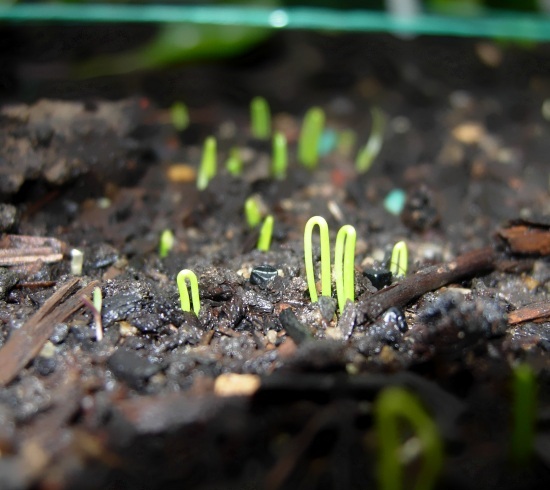
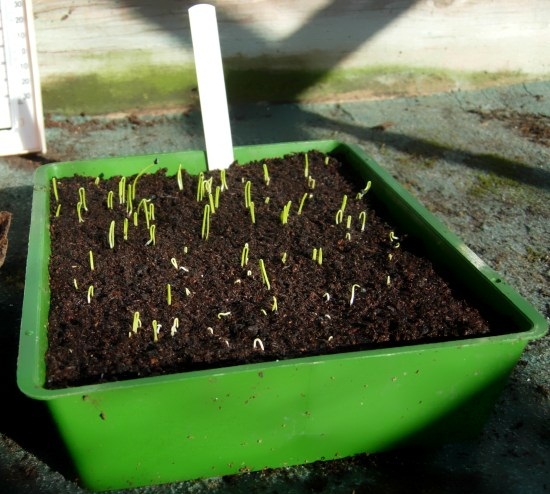
Place the seeds inside the container or in the outdoor garden if you have a suitable space for that.
Plan to plant the seeds, leaving a distance of 10 cm between them and the rows about 20 cm, as we mentioned above.
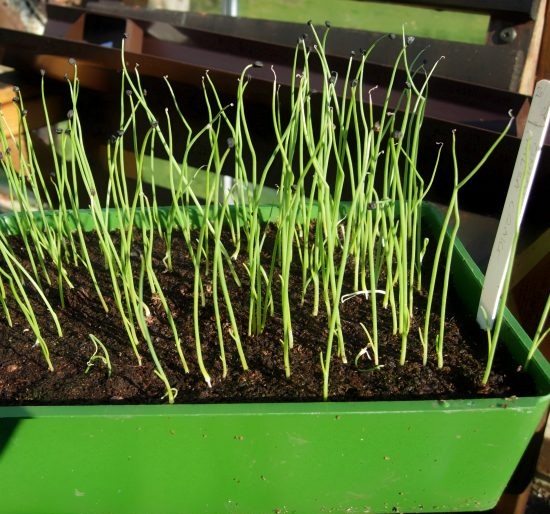
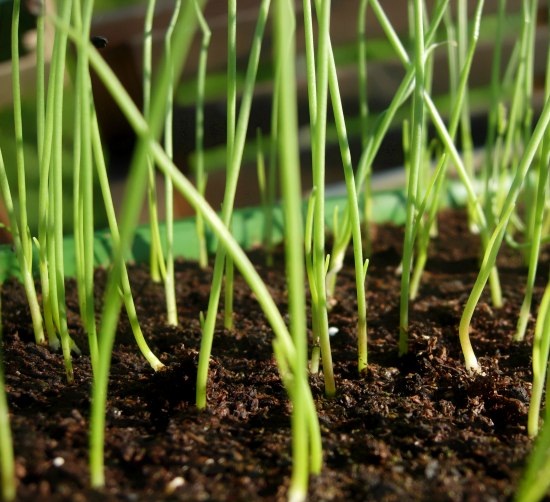
Leave the seedlings until they grow and green leaves appear.
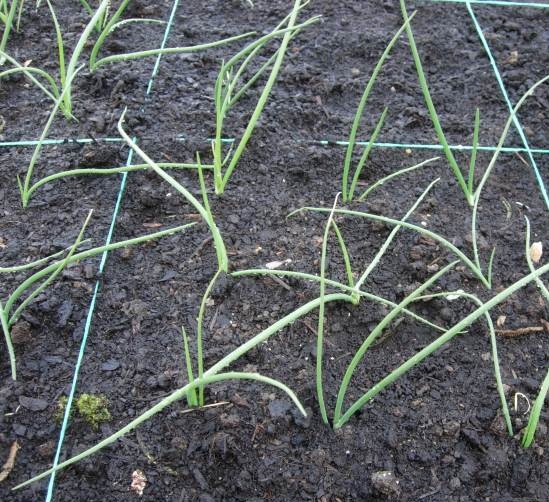
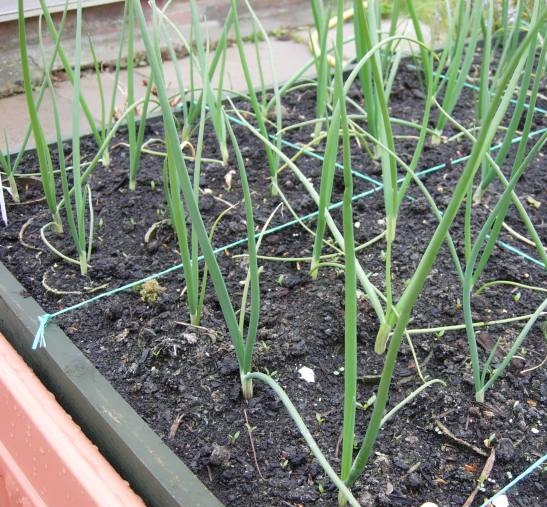
The roots will be at the bottom and the green leaves will be at the top, as shown before you.
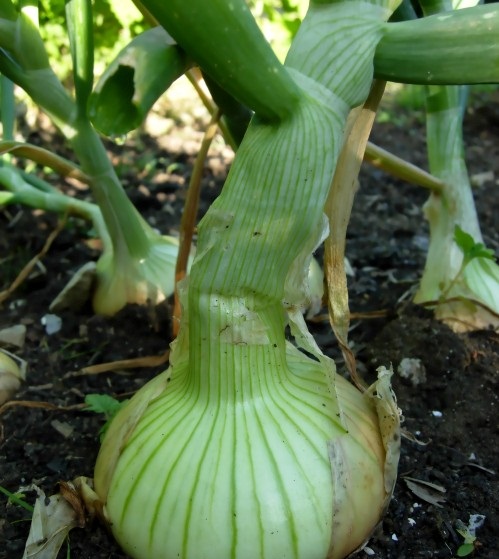
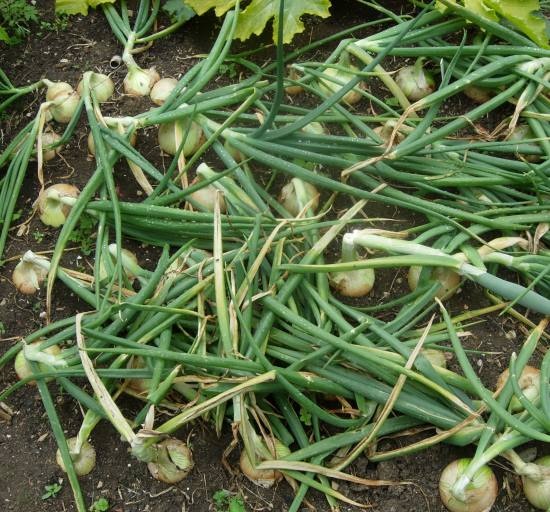
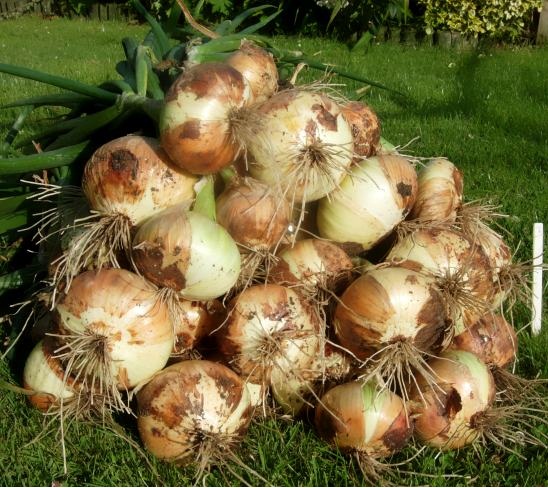
The onions continue to grow and look as they do in the pictures
Tips when growing onions at home:
There are some important tips that must be followed when growing onions at home, which include the following:
1- Start using seeds:
You can keep onion seeds for two years in a cool, dry place, such as seed storage boxes, and monitor them properly, but fresh onion seeds in the first year germinate better. Germination rates decrease with age, and although seeds up to three years old germinate well, germination is better with fresh seeds. You can also purchase a new bag of seed mixture each spring as a safety precaution against soil-borne diseases. You can place leftover onions in pots for up to 10 weeks.
2- Saving heat:
Onions need a temperature between 88 and 77 degrees Fahrenheit, with a slight drop in temperature at night. Before you begin, try to prepare the necessary heat through artificial light from fluorescent lights so that the heat is sufficient to germinate the onions. You can use new seeded containers in a plastic bag to maintain moisture and provide heat from the bottom until the onion seeds germinate within 8 days.
3- Cutting the seed husks:
Shortly after germination occurs, indoor onion seedlings often perform poorly in setting to seed. Therefore, you need to cut the peels that may prevent good growth.
4- Put it under the lights and prune again:
At this stage, growing onions from seeds requires additional bright light, which is provided by a diode fluorescent lamp. Leave the lights on the onions for 12 hours a day and place them within 1 inch of the lamps. In this case, you need to trim the onion about 3 inches, preventing it from falling, and use scissors to do this process.
5- Plant onions when they grow:
If you plant onions in a small container after a period of growth of about 3 weeks, you may need to transfer the onion seedlings that contain three leaves and plant them deeply in a container that is no less than 4 inches deep. From experience, onions grow much faster when the root is placed in a vertical position. Of those confined to shallow places. But containers made from the bottoms of milk cartons or large paper cups contain onion seedlings.
6- Trimming seed leaves:
Shortly after planting onions, onions often release seedling leaves that need pruning to keep the containers tidy. Onion seedlings respond to transplanting by pruning 5 inches of leaf.
7- Providing the maximum amount of light:
Of course there is no better natural light source than sunny days, so small onions are moved outdoors when they are out in the warm sun. In case of wind, it can be covered with a plastic frame to protect the onions from the cold temperature.
8- Fertilizers:
Perhaps after a period of growth, you need to apply fertilizer to the onions. In certain cases, you may not need to put onions. In this case, you get organic onions. Any plant during the growth period needs to provide biofertilizer. Because it is important when growing onions, as onions consume a lot of the phosphorus they need.
9- Plant leafy vegetables between the rows to prevent weeds:
If you suffer from weeds growing with onions in the soil, you are waging a war on weeds. To prevent this, you can plant leafy vegetables such as arugula, lettuce and other leafy vegetables between small onions grown from seed. In addition to preventing weed growth, you can use it to prepare a different salad dish.
10 – Pests and problems encountered while growing onions:
Circulation: If the soil is wet, there may be mold on the stem, which occurs due to wet soil without air circulation.
Thrips: These are small, yellowish-brown flying insects that feed on leaves and can cause twisting or curling.
